The 30 Best Places to Live in Rhode Island
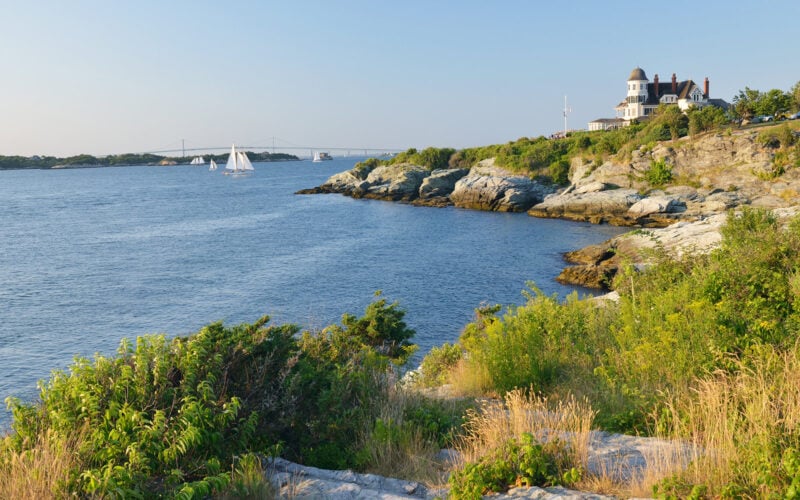
Rhode Island may be the smallest state in the nation, but it offers an impressive variety of communities that cater to different lifestyles and preferences.
From bustling urban centers to quiet coastal towns, each area presents unique advantages in terms of affordability, amenities, and quality of life.
Choosing the right place to live in Rhode Island requires careful consideration of factors like cost of living, local schools, cultural attractions, and proximity to employment opportunities.
The state’s compact size means residents can easily access beaches, historic sites, and metropolitan areas regardless of where they settle, making location decisions often come down to personal priorities and lifestyle preferences.
Here are the 30 best places to Live in Rhode Island:
30. Central Falls
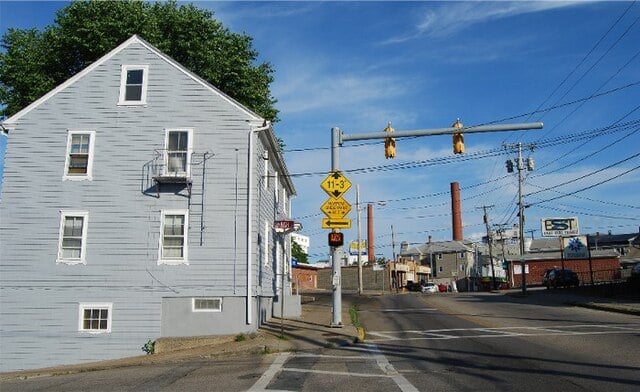
Central Falls ranks as the most affordable place to live in Rhode Island. The city offers significantly lower housing costs compared to the state average of $323,786.
This small city has a population of 19,437 residents. The typical household earns $34,689 annually, which is below the national median income.
Central Falls demonstrates strong safety metrics, ranking 19th out of 177 Rhode Island cities for low crime rates. The city also ranks 17th for residents with higher education credentials.
The poverty rate stands at 29.9%, which exceeds the national average. Despite economic challenges, the city maintains appeal for budget-conscious residents seeking affordable housing options.
Central Falls provides access to Rhode Island’s amenities while keeping living costs manageable. The city’s small size creates a close-knit community atmosphere for residents.
29. Jamestown

Jamestown sits in Newport County with a population of 5,545 residents. This suburb of Providence offers a rural feel while maintaining proximity to urban amenities.
Most residents own their homes in this peaceful community. The town provides numerous bars, restaurants, coffee shops, and parks for daily entertainment and recreation.
Jamestown ranks as one of the best places to retire in Rhode Island. It also earned recognition as one of the top places to raise a family in the state.
Home prices in Jamestown exceed Rhode Island’s average of $323,786. The higher cost reflects the desirable location and quality of life the town provides.
The community has gained recognition as one of the most peaceful places to live in the country. Residents enjoy coastal access and small-town charm combined with modern conveniences.
28. West Warwick

West Warwick sits in Kent County with a population of approximately 31,000 residents. The town offers an urban-suburban mix that appeals to young professionals and families alike.
Most residents own their homes in this Providence suburb. The median home value stays just under $300,000, which falls below the national average and makes housing more affordable than many Rhode Island communities.
The town features historic mill buildings that reflect its industrial heritage. These structures have been converted into modern lofts and apartments, blending historical character with contemporary living spaces.
West Warwick consistently ranks among the top places to live in Rhode Island. The rankings consider factors like cost of living, public school quality, crime rates, and job opportunities.
The community maintains a neighborhood-focused atmosphere with cultural diversity. Residents tend to lean liberal politically and enjoy the town’s mix of small-town charm and modern amenities.
27. Richmond
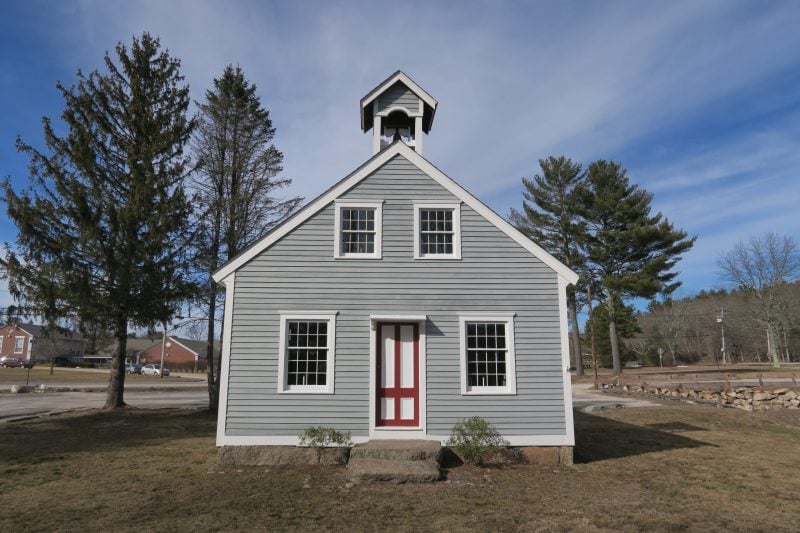
Richmond sits in Washington County and offers a more rural lifestyle compared to Rhode Island’s urban centers. The town provides residents with quiet suburban neighborhoods and open spaces.
Home prices in Richmond exceed the state average of $323,786. This reflects the area’s desirability among buyers seeking peaceful residential communities.
The town maintains low crime rates and strong community connections. Families appreciate the small-town atmosphere and access to local amenities.
Richmond’s location provides convenient access to both coastal areas and neighboring Connecticut. Residents can enjoy outdoor recreation while remaining within commuting distance of larger employment centers.
The community emphasizes neighborhood friendliness and local engagement. Schools serve the area adequately, though options may be more limited than in larger municipalities.
26. North Smithfield
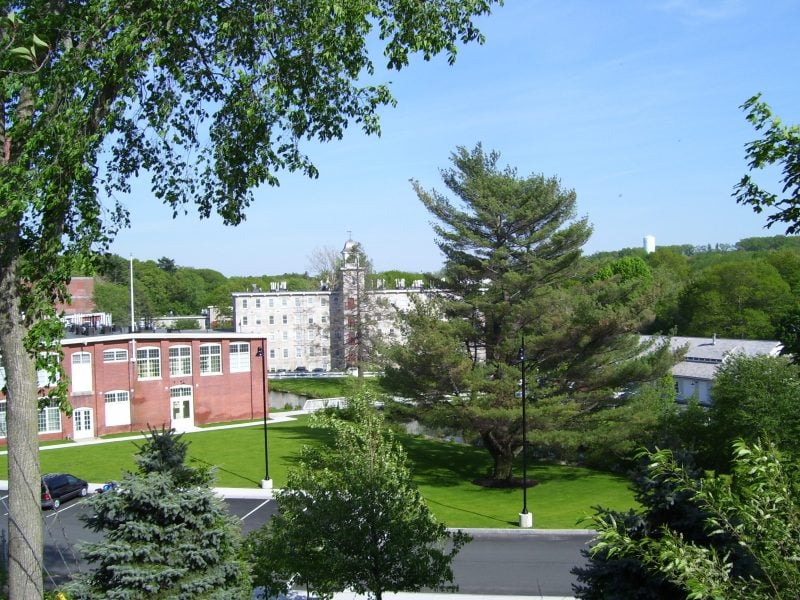
North Smithfield sits in Providence County with approximately 12,000 year-round residents. The town offers a suburban atmosphere that appeals to families and retirees alike.
This community provides access to essential services while maintaining its small-town character. Residents benefit from reasonable proximity to healthcare facilities and shopping options.
The town features St. John the Evangelist Christian Church and other local establishments. North Smithfield maintains lower crime rates compared to many urban areas in the state.
Housing costs in North Smithfield tend to be higher than similar-sized communities elsewhere. However, home prices align closely with Rhode Island’s state average of $323,786.
The location provides convenient access to larger cities while preserving a quieter residential environment. North Smithfield ranks among communities that meet multiple livability criteria for Rhode Island residents.
25. Charlestown

Charlestown sits on the eastern edge of Rhode Island at the head of Narragansett Bay. The town offers coastal living with access to beaches and waterfront activities.
Home prices in Charlestown exceed the state average of $323,786. This reflects the desirability of the area and its coastal location.
The climate varies significantly throughout the year. June, July, and August provide the most comfortable weather conditions. January and February tend to be the least pleasant months for residents.
Charlestown ranks 10th out of 44 Rhode Island communities for retirement living. The town attracts retirees seeking a quieter coastal lifestyle away from urban centers.
The community provides small-town charm while maintaining proximity to larger Rhode Island cities. Residents enjoy access to natural areas and recreational opportunities along the coastline.
24. Scituate

Scituate ranks among Rhode Island’s top communities for families and public education. The town places 22nd out of 33 suburbs for best public schools statewide.
Located in Washington County, Scituate maintains a population of approximately 10,200 residents. The town offers a blend of rural charm and suburban amenities.
The Scituate Reservoir serves as Rhode Island’s largest freshwater body. Residents enjoy scenic walking trails, birdwatching opportunities, and peaceful waterfront views.
Hope Village provides a historic downtown district with preserved mill buildings. Local shops and restaurants create a welcoming community atmosphere.
The town maintains a healthy economy with an unemployment rate of 3.4 percent. This figure sits below many regional averages.
Outdoor enthusiasts can access nearby rivers and streams for kayaking and fishing. The area’s natural resources support various recreational activities throughout the year.
23. Glocester
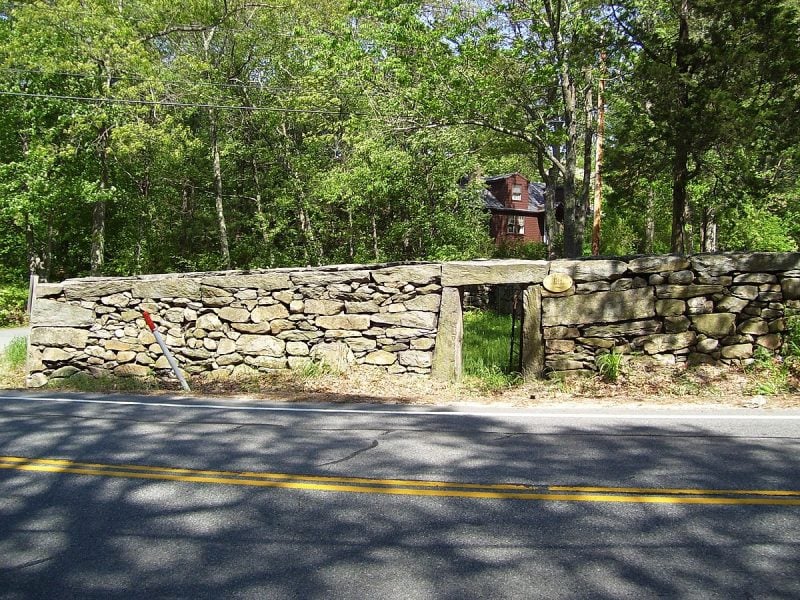
Glocester ranks as the 11th best place to buy a house in Rhode Island according to 2025 rankings. This rural town in Providence County has a population of 10,067 residents.
The community offers a peaceful, small-town atmosphere with strong natural beauty. Most residents own their homes and enjoy the area’s rural character.
Glocester scored well in key livability factors including cost of living, crime rates, and education quality. The town’s public schools receive high ratings from residents.
Young professionals are drawn to the area’s tight-knit community feel. The cost of living sits 8.8% higher than the national average but remains competitive for Rhode Island.
Notable attractions include the Chepachet Village Historic District and George Washington Management Area. Founded in 1642, Glocester maintains its historical charm while providing modern amenities for residents.
22. Hopkinton
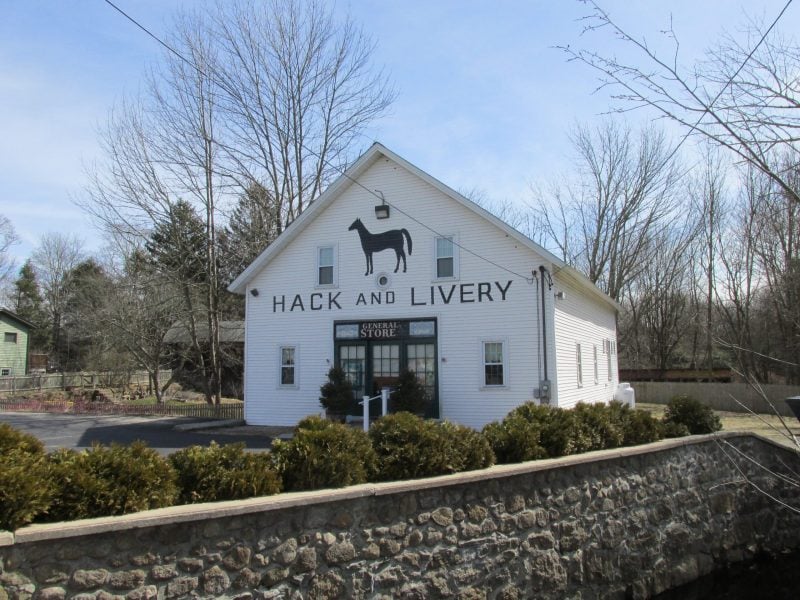
Hopkinton offers residents a peaceful small-town atmosphere with fewer than 8,500 people. The community maintains its historic charm while providing modern amenities for families and outdoor enthusiasts.
The town ranks 21st out of 44 Rhode Island places for public schools. It also places 34th out of 69 for best places to raise a family in the state.
Home prices in Hopkinton align closely with Rhode Island’s average of $323,786. This pricing makes it accessible to many potential residents seeking quality housing options.
Hopkinton provides over 1,000 acres of outdoor recreational space. These green areas offer hiking trails, parks, and natural preserves for active residents.
The town’s location provides easy access to both rural activities and nearby urban centers. Local businesses contribute to the community’s welcoming small-town character that attracts new residents.
21. Woonsocket
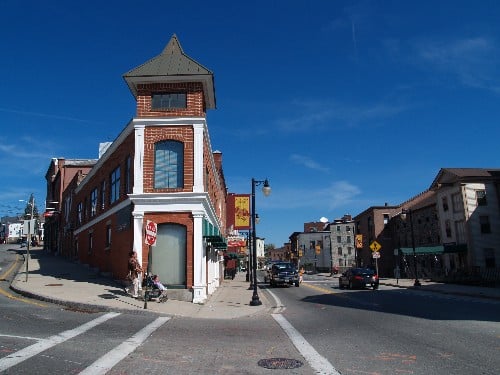
Woonsocket ranks as the sixth-best place to live in Rhode Island. The city offers affordable housing options with home prices below the state average of $323,786.
The North End features larger homes on quieter streets, attracting families seeking peaceful neighborhoods. Bernon stands out as a historic district with Victorian architecture and strong community bonds.
The Social District provides convenient downtown access with mixed housing styles. Fairmount appeals to families with well-maintained properties and a family-oriented environment.
Globe Village offers diversity with varied housing options throughout the neighborhood. The city maintains an exceptional education system with high graduation rates and strong academic performance.
Woonsocket provides diverse business opportunities and job prospects across multiple industries. The community balances historic charm with modern amenities for residents of all ages.
20. Lincoln
Lincoln ranks among Rhode Island’s most desirable suburban communities. The town offers residents a peaceful residential atmosphere while maintaining convenient access to Providence and other major areas.
Home values in Lincoln exceed the state average of $323,786. This reflects the community’s strong market demand and desirable living conditions.
The town features well-regarded neighborhoods that attract families and professionals. Lincoln provides a balance of suburban tranquility with urban accessibility.
Residents enjoy access to quality schools and local amenities. The community maintains low crime rates and friendly neighborhoods that contribute to its appeal.
Lincoln’s location offers easy commuting options to employment centers throughout Rhode Island. The town combines residential comfort with practical convenience for daily needs.
19. Exeter
Exeter sits in Washington County in southwestern Rhode Island. This small town ranked second on BestPlaces.net’s list of best places to live in Rhode Island for 2020.
The community features a rural landscape with farms and forests throughout the area. Residents enjoy access to outdoor recreation at Arcadia and Burlingame Management Areas.
Home prices in Exeter exceed the state average of $323,786. The higher costs reflect the desirability of the area’s neighborhoods.
The town maintains a quiet, rural character while providing convenient access to outdoor activities. Exeter appeals to those seeking a peaceful setting with natural amenities nearby.
18. Smithfield
Smithfield stands out as one of Rhode Island’s premier residential communities. This Providence County suburb hosts approximately 22,075 residents who enjoy a dense suburban atmosphere.
The town offers residents substantial value with a median income around $85,337. Home prices align closely with Rhode Island’s state average of $323,786, making it accessible to many buyers.
Smithfield provides abundant amenities including numerous restaurants, coffee shops, and parks. The community maintains a small-town feel while offering modern conveniences and shopping centers.
Safety ranks among Smithfield’s strongest attributes, earning recognition as one of Rhode Island’s safest cities. The friendly, welcoming residents create an environment where newcomers easily integrate into the community.
Most residents own their homes in this established suburb. Smithfield’s location provides convenient access to Providence while maintaining its distinct residential character and historical significance.
17. Tiverton
Tiverton ranks as one of Rhode Island’s most affordable communities with the 9th lowest cost of living in the state. This small town of approximately 16,000 residents sits in Newport County along the eastern coast.
The community maintains excellent safety standards with crime rates among the best in Rhode Island. Residents enjoy peaceful neighborhoods and a strong sense of community.
Tiverton offers scenic waterfront views and easy access to recreational activities. Grinnell’s Beach provides picturesque outdoor spaces for residents seeking relaxation.
The town combines small-town charm with practical amenities. Educational options are readily available for families considering the area.
Tiverton appeals to those seeking an affordable, safe place to live without sacrificing quality of life. The community maintains its New England character while providing modern conveniences.
16. Johnston
Johnston ranks as a solid choice for Rhode Island residents seeking affordability and quality of life. This small city houses approximately 29,000 people in a suburban setting.
The community earns a quality of life score of 76 out of 100 according to rankings. This rating considers factors like cost of living, crime rates, education levels, and local amenities.
Housing costs remain below the state average in Johnston. Home prices are less expensive than Rhode Island’s average of $323,786, making homeownership more accessible.
The city maintains manageable crime rates compared to other Rhode Island communities. Residents benefit from a suburban atmosphere while staying connected to the greater Providence area.
Johnston offers a practical balance of affordability and livability for families and individuals.
15. North Kingstown
North Kingstown stands out as one of Rhode Island’s premier suburban communities. This Washington County town houses 27,736 residents and consistently ranks among the state’s best places to live.
The community offers a sparse suburban atmosphere where most residents own their homes. This creates stable neighborhoods and a strong sense of community throughout the area.
Home prices in North Kingstown exceed Rhode Island’s average of $323,786. The higher costs reflect the desirable location and quality amenities that attract homebuyers to the area.
Residents enjoy numerous coffee shops and parks scattered throughout the town. These amenities contribute to the high quality of life that North Kingstown provides.
The town’s location provides easy access to Newport and Jamestown. This proximity allows residents to enjoy coastal attractions while maintaining a quieter suburban lifestyle away from busier tourist areas.
14. Barrington
Barrington consistently ranks as one of Rhode Island’s top places to live. This Bristol County suburb has a population of approximately 16,836 residents.
The town sits south of Providence and offers excellent public schools. These educational facilities are considered among the best in Rhode Island, making Barrington popular with families.
Safety is a major draw for residents. Barrington maintains low crime rates and ranks among the safest communities in the state.
The town provides numerous amenities including parks, libraries, and recreational facilities. Local restaurants and shops offer dining and shopping options for residents and visitors.
Home prices in Barrington exceed the state average of $323,786. The higher cost reflects the desirability of the area and quality of life it offers.
Barrington’s close-knit community atmosphere appeals to families seeking a suburban lifestyle. The town combines small-town charm with proximity to Providence’s urban amenities.
13. Middletown
Middletown sits in Newport County with approximately 17,000 residents. This small city ranks #28 out of 450 cities nationwide according to bestplaces.net.
The city offers high-quality amenities despite its modest size. Residents enjoy access to excellent schools and community facilities.
Housing costs exceed the Rhode Island state average of $323,786. The premium reflects strong market demand for this desirable location.
Middletown provides better value compared to nearby Newport and Westerly. Many residents appreciate the cost-to-benefit ratio the city offers.
The community attracts families seeking suburban living with urban conveniences. Its proximity to coastal attractions adds to its appeal for potential residents.
12. Pawtucket
Pawtucket stands as Rhode Island’s fourth-largest city with a population of 75,280 residents. The city offers an urban-suburban mix that appeals to families and young professionals alike.
Home prices in Pawtucket remain below the state average of $323,786, making it an affordable option. Most residents rent their homes rather than own them.
The city features numerous bars, restaurants, coffee shops, and parks throughout its neighborhoods. Residents tend to have liberal political leanings and enjoy the diverse community atmosphere.
Pawtucket holds significant historical importance as the birthplace of the American Industrial Revolution. Samuel Slater built the nation’s first water-powered cotton mill here in the late 1700s.
Notable neighborhoods include Oak Hill with its upscale historic homes, family-friendly Fairlawn, and Quality Hill’s preserved Victorian architecture. The city has undergone considerable renewal with projects like Riverfront Lofts and Main Street revitalization.
11. Coventry
Coventry ranks among Rhode Island’s most desirable communities, consistently appearing on best places to live lists. The town houses nearly 12,000 residents in Kent County.
Home prices in Coventry remain below the state average of $323,786. This affordability attracts buyers seeking value in Rhode Island’s competitive housing market.
The community maintains low crime rates, contributing to its reputation as one of the state’s safest towns. Families appreciate the secure environment for raising children.
Coventry offers scenic landscapes with numerous parks and natural reserves. Residents enjoy outdoor activities like hiking and camping at nearby state parks throughout the year.
The town provides excellent schools that draw families to the area. Educational quality remains a key factor in Coventry’s appeal to new residents.
10. Westerly
Westerly stands out as one of Rhode Island’s premier residential destinations. The town has a population of 23,318 and offers residents a sparse suburban atmosphere.
Located in Washington County, Westerly attracts homeowners with 73% of residents owning their properties. The community provides abundant dining and entertainment options with numerous bars, restaurants, and coffee shops.
Home prices in Westerly exceed the state average of $323,786. The town’s real estate market reflects strong demand from people seeking quality living conditions.
Westerly’s appeal stems from its combination of suburban tranquility and urban amenities. Residents enjoy access to good schools, manageable crime rates, and various local attractions that enhance daily life.
The town consistently ranks among Rhode Island’s best places to live. Its balanced lifestyle attracts families, professionals, and retirees looking for a well-rounded community experience.
9. South Kingstown
South Kingstown stands out as one of Rhode Island’s premier residential destinations. This Washington County community has a population of 32,005 and offers residents a sparse suburban atmosphere.
The town serves as home to the University of Rhode Island, bringing academic energy to the area. Much of the Kingstown Village Historic District appears on the National Register of Historic Places.
Residents enjoy beautiful beaches and a close-knit community feel. The area features excellent schools and maintains high ratings for livability and safety.
South Kingstown attracts many young professionals who appreciate the balance of suburban living with cultural amenities. Most residents own their homes in this desirable location.
The town offers vibrant shopping and dining options alongside its historic charm. Its combination of educational institutions, coastal access, and strong community bonds makes it highly sought after.
8. East Greenwich
East Greenwich stands out as one of Rhode Island’s most desirable communities. This waterfront suburb in Kent County sits along the shores of Narragansett Bay with a population of approximately 14,000 residents.
The town offers excellent educational opportunities and maintains very low crime rates. Families particularly appreciate the safe environment and quality schools available throughout the area.
East Greenwich provides convenient access to major destinations. Residents can reach Providence within 20 minutes traveling north or arrive at Narragansett beaches in 20 minutes heading south.
The charming downtown area features tree-lined streets and historic architecture. Local restaurants, coffee shops, and boutiques create a walkable community atmosphere.
Housing costs exceed the state average, reflecting the area’s desirability. Most residents own their homes in this dense suburban setting that balances small-town charm with modern amenities.
7. Kingston
Kingston ranks among Rhode Island’s top places to live in 2024. The town serves as home to the University of Rhode Island, creating a vibrant college community atmosphere.
Housing costs in Kingston exceed the state average of $323,786. Despite higher home prices, rental properties remain surprisingly affordable for residents.
The community offers an ideal environment for raising families. Many residents appreciate the town’s family-friendly atmosphere and educational opportunities.
Kingston provides excellent amenities for retirees as well. The area combines small-town charm with access to university resources and cultural activities.
The town attracts both longtime residents and newcomers. Its proximity to the university creates a unique blend of permanent residents and student populations.
Kingston’s neighborhoods offer good market value despite higher costs. The demand for housing reflects the area’s desirability and quality of life.
6. Narragansett
Narragansett stands as one of Rhode Island’s premier coastal communities. This seaside town sits along the Atlantic Ocean, offering residents stunning beaches and ocean views.
The town ranks third among the best places to retire in Rhode Island. It also places fifth for areas with the best public schools statewide.
Narragansett provides a relaxed atmosphere that attracts those seeking coastal living. The community maintains a peaceful environment while offering access to beautiful shoreline areas.
Home prices in Narragansett exceed the state average of $323,786. This reflects the desirability of the location and its coastal amenities.
The town combines natural beauty with quality amenities. Residents enjoy access to beaches, good schools, and a safe community environment that makes it attractive for families and retirees alike.
5. Bristol
Bristol ranks as one of Rhode Island’s most appealing places to live. The town sits on the eastern edge of the state at the head of Narragansett Bay.
Bristol is known as “the most patriotic town in America.” This coastal community offers residents a unique blend of historical charm and modern amenities.
The cost of living in Bristol remains relatively affordable compared to nearby Providence. Home prices in Bristol exceed the state average of $323,786, reflecting the area’s desirability.
Bristol ranks third among Rhode Island’s best suburbs for young professionals. The town also places seventh in the state’s best places to retire.
Residents enjoy access to quality public schools and a close-knit community atmosphere. The town’s coastal location provides stunning waterfront views and recreational opportunities along Narragansett Bay.
4. Newport
Newport sits on Aquidneck Island in Narragansett Bay, just 35 miles southwest of Providence. This coastal town combines historic charm with modern amenities.
The city gained fame as a major port in the 1700s. Today, Newport attracts residents with its historic mansions and sailing culture.
Home prices exceed the state average of $323,786, reflecting the area’s desirability. The higher cost reflects Newport’s prime waterfront location and quality amenities.
Residents enjoy outdoor activities like boating and biking year-round. The International Tennis Hall of Fame Museum adds cultural appeal to the community.
Newport’s population of approximately 25,000 creates a close-knit atmosphere. The town offers easy access to both Providence and Boston for work or entertainment.
The combination of history, coastal living, and proximity to major cities makes Newport appealing to many buyers.
3. Warwick
Warwick stands as Rhode Island’s second-largest city, positioned along the scenic shores of Narragansett Bay. The city sits just 12 miles south of downtown Providence, offering residents easy access to urban amenities while maintaining its coastal charm.
The community features picturesque beaches and a welcoming atmosphere that attracts families and professionals alike. Local schools consistently achieve high performance ratings, making Warwick appealing to parents seeking quality education options.
Housing costs in Warwick remain below the state average of $323,786, providing more affordable options compared to other Rhode Island communities. The city’s cost of living stays relatively low while still offering access to outdoor activities and cultural attractions.
Warwick’s location provides strategic advantages for businesses and residents. Two-thirds of New England’s population can be reached within a 75-mile radius, creating economic opportunities and convenient access to regional resources.
2. Cranston
Cranston stands as Rhode Island’s premier residential destination. The city combines coastal charm with suburban comfort across its tree-lined neighborhoods.
Home prices remain below the state average of $323,786. This affordability attracts families and young professionals seeking quality housing options.
The city offers excellent public schools and maintains low crime rates. Residents benefit from strong community connections and well-maintained public spaces.
Cranston’s location provides easy access to Providence while maintaining a quieter residential atmosphere. The city features diverse neighborhoods ranging from waterfront properties to family-friendly subdivisions.
Local amenities include parks, recreational facilities, and cultural attractions. The cost of living remains reasonable compared to other New England cities.
The community emphasizes inclusivity and ongoing development projects. These initiatives ensure continued growth while preserving the city’s historic character and small-town feel.
1. Providence
Providence stands as Rhode Island’s capital and largest city. The city ranks in the top 100 places to live nationally according to US News.
Providence offers a diverse economy with expanding job opportunities. The city features a vibrant arts scene and acclaimed culinary establishments that attract residents and visitors alike.
Several top-rated educational institutions call Providence home. The city provides numerous neighborhood options, each with distinct characteristics and amenities.
Housing costs in Providence align closely with Rhode Island’s state average of $323,786. This makes the city accessible compared to many other northeastern metropolitan areas.
The city combines historical significance as part of the original 13 colonies with modern urban conveniences. Providence serves as a cultural hub while maintaining reasonable living costs.
Multiple neighborhoods throughout the city offer different lifestyle options. Residents benefit from the city’s strong public transportation system and proximity to other New England destinations.
Key Factors for Choosing Where to Live in Rhode Island
Rhode Island’s compact size allows residents to access diverse living environments within short distances. Housing costs vary significantly between coastal communities and inland areas, while neighborhood character ranges from historic downtown districts to suburban family enclaves.
Cost of Living and Housing
Housing costs in Rhode Island fluctuate dramatically based on location and proximity to the coast. Waterfront communities like Newport and Westerly command premium prices, with median home values often exceeding $500,000.
Inland cities such as Cranston and Warwick offer more affordable options. These areas typically feature median home prices between $250,000 and $350,000.
Key Housing Cost Factors:
- Coastal proximity – Ocean access adds 20-40% to property values
- School district quality – Top-rated districts increase home prices significantly
- Historic designation – Properties in historic areas carry preservation requirements
Property taxes vary by municipality. Some towns maintain rates below 1.2%, while others exceed 1.8% of assessed value.
Rental markets concentrate in Providence and surrounding suburbs. One-bedroom apartments range from $1,200 to $2,000 monthly depending on location and amenities.
Community and Neighborhood Vibe
Rhode Island neighborhoods showcase distinct personalities shaped by history and demographics. Providence offers urban energy with diverse dining, arts venues, and nightlife concentrated downtown.
Suburban communities like Barrington and East Greenwich attract families seeking quiet residential streets. These towns feature tree-lined neighborhoods with single-family homes and local community centers.
Neighborhood Types:
- Historic districts – Colonial architecture with walkable downtown areas
- Coastal villages – Maritime culture with seasonal tourism activity
- Suburban developments – Modern amenities with family-oriented services
Small-town character defines many Rhode Island communities. Residents often know their neighbors and participate in local events like farmers markets and town festivals.
College towns like Kingston bring younger demographics and academic influence. These areas offer cultural events and maintain active community calendars year-round.
Access to Nature and Outdoor Activities
Rhode Island’s coastline provides 400 miles of shoreline with beaches, sailing, and fishing opportunities. Block Island offers ferry access to pristine beaches and hiking trails.
State parks and forests cover approximately 9% of Rhode Island’s land area. Lincoln Woods State Park features freshwater swimming and hiking trails within 30 minutes of most communities.
Outdoor Recreation Options:
- Ocean activities – Swimming, surfing, boating along Atlantic coast
- Trail systems – East Bay Bike Path spans 14.5 miles waterfront
- Parks access – 15 state parks offer camping and day-use facilities
Narragansett Bay creates sheltered waters ideal for kayaking and sailing. Many coastal towns maintain public boat launches and marinas for residents.
Winter activities include cross-country skiing at state parks. Ice fishing and winter hiking remain popular during colder months.
Urban green spaces like Roger Williams Park in Providence combine nature access with city living. The park features 435 acres with walking paths, gardens, and recreational facilities.
Understanding Rhode Island’s Unique Appeal
Rhode Island combines centuries of American history with modern educational institutions and diverse career paths. The state’s compact size creates concentrated cultural offerings while maintaining strong connections to major Northeast economic centers.
Cultural and Historical Attractions
Rhode Island holds significant importance as one of the original 13 colonies. The state showcases this heritage through preserved colonial architecture visible throughout its cities and towns.
Newport stands out for its Gilded Age mansions and waterfront properties. The city hosts the renowned Newport Jazz Festival, drawing visitors from across the region annually.
Providence offers a concentrated arts district with galleries, theaters, and performance venues. The city’s Federal Hill neighborhood provides authentic Italian dining experiences and cultural events.
The state’s 39 cities and towns each maintain distinct historical character. Colonial-era buildings, churches, and town squares remain active community centers rather than mere tourist attractions.
Coastal attractions include over 400 miles of shoreline despite the state’s small size. Historic lighthouses, fishing villages, and working harbors demonstrate Rhode Island’s maritime heritage.
Museums like the International Tennis Hall of Fame and the Newport Art Museum preserve both sporting and artistic traditions. These institutions offer year-round programming for residents and visitors.
Education and Career Opportunities
Rhode Island houses several prominent higher education institutions. Brown University in Providence ranks among the Ivy League schools and contributes significantly to the local economy through research and employment.
University of Rhode Island provides comprehensive undergraduate and graduate programs. The institution’s coastal location supports marine science and oceanography research programs.
The state’s proximity to Boston creates commuter opportunities for professionals seeking higher salaries while maintaining Rhode Island residence. Train and highway connections make daily commuting feasible.
Healthcare and education sectors employ significant portions of the workforce. Major hospital systems and school districts provide stable career paths with competitive benefits.
Tourism and hospitality industries support seasonal and year-round employment. Newport’s wedding venues, restaurants, and hotels create diverse service sector jobs.
The state’s small business environment benefits from lower overhead costs compared to neighboring Massachusetts and Connecticut. Local entrepreneurs find supportive networks and resources for startup ventures.





